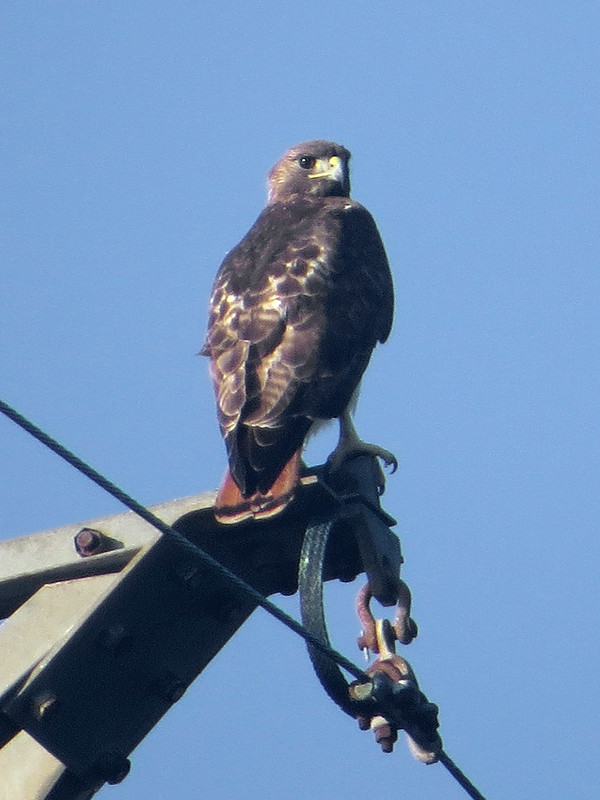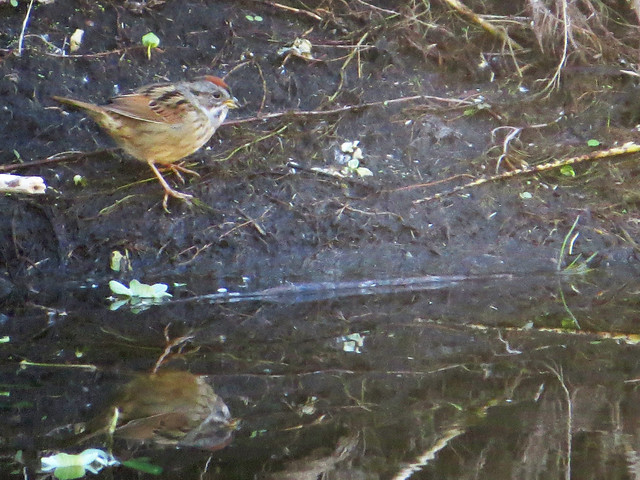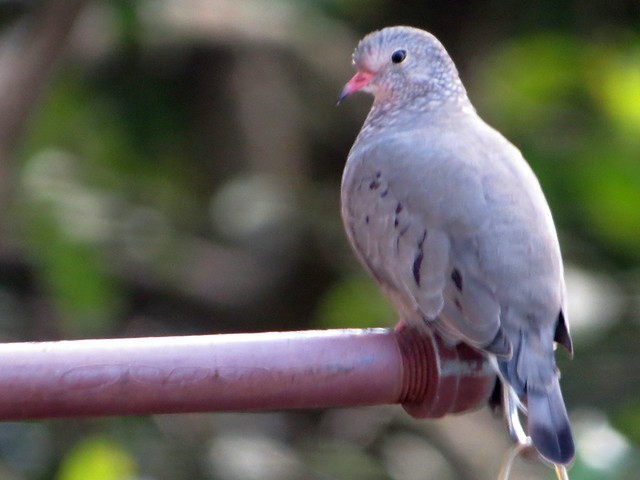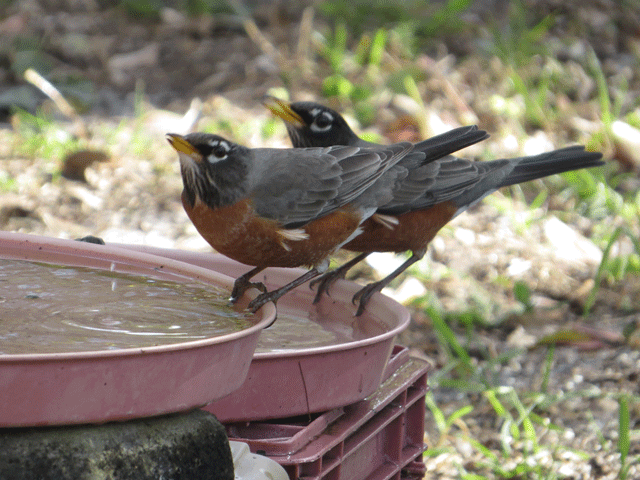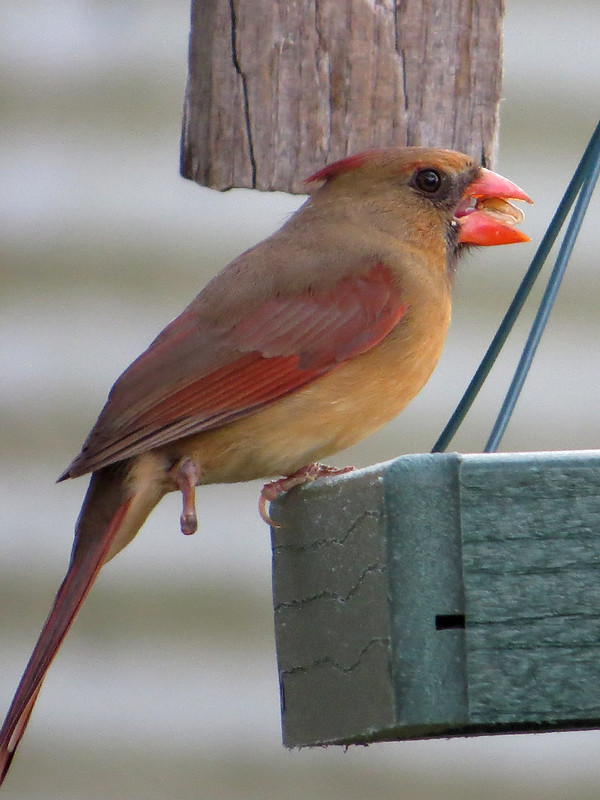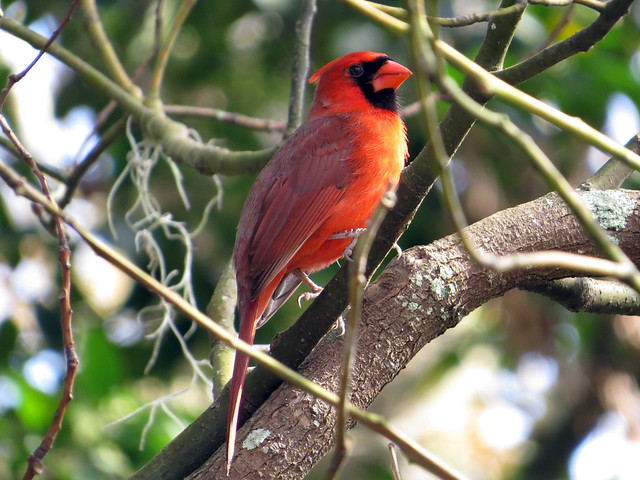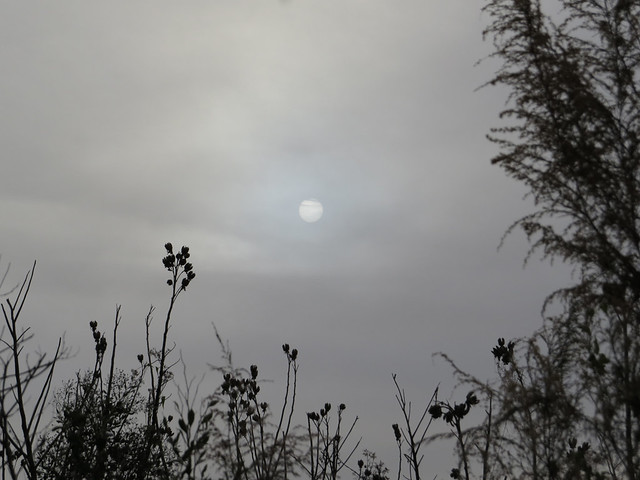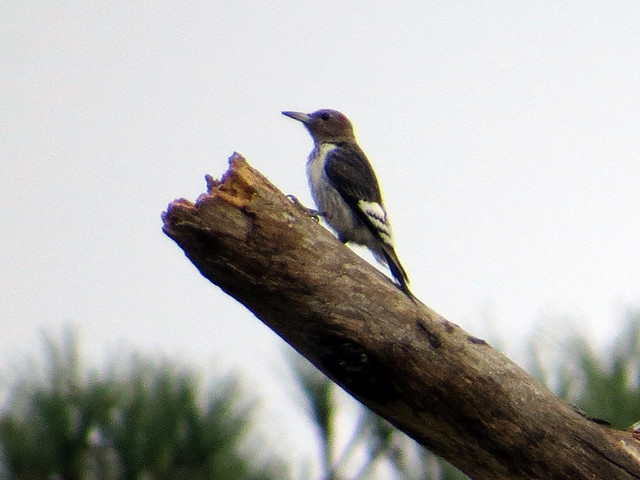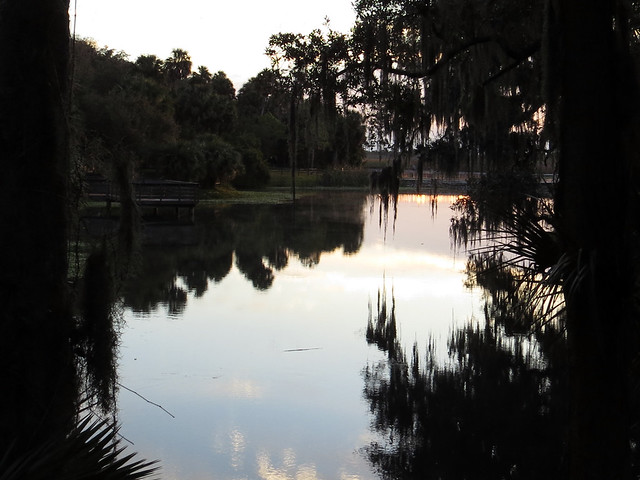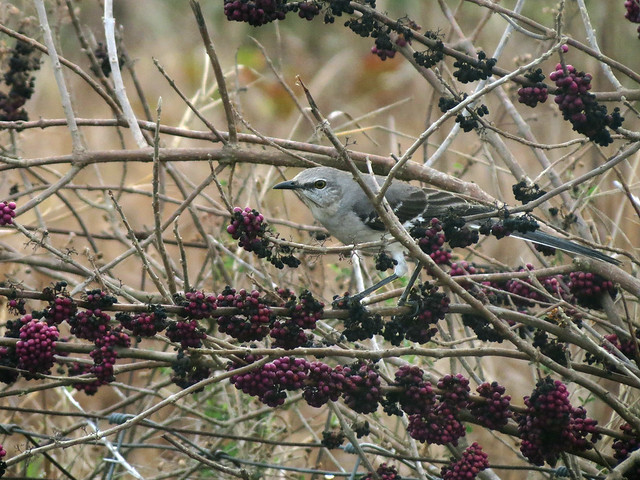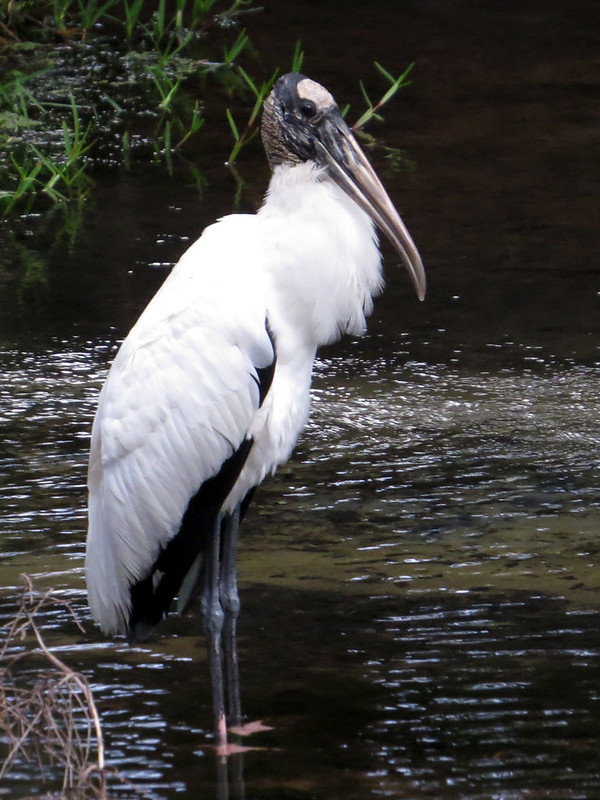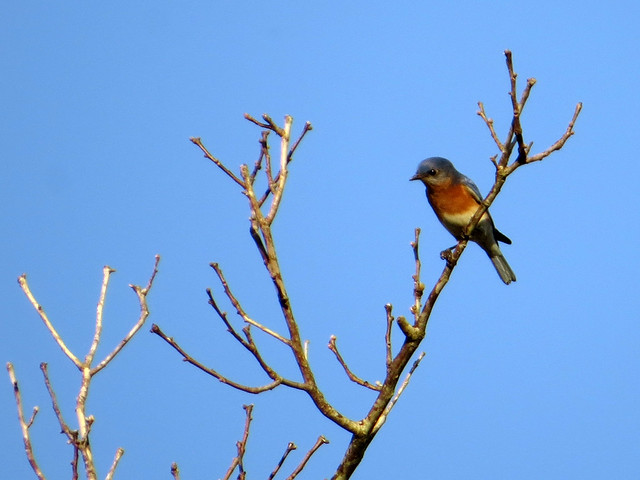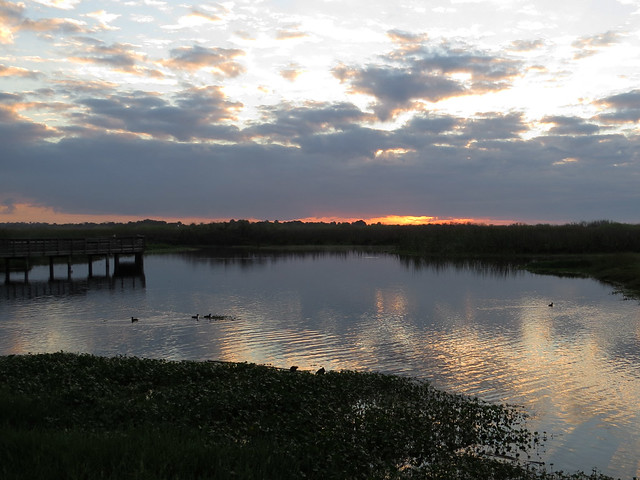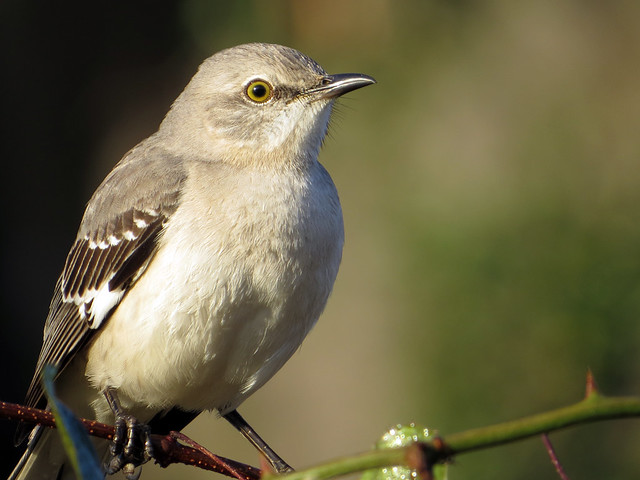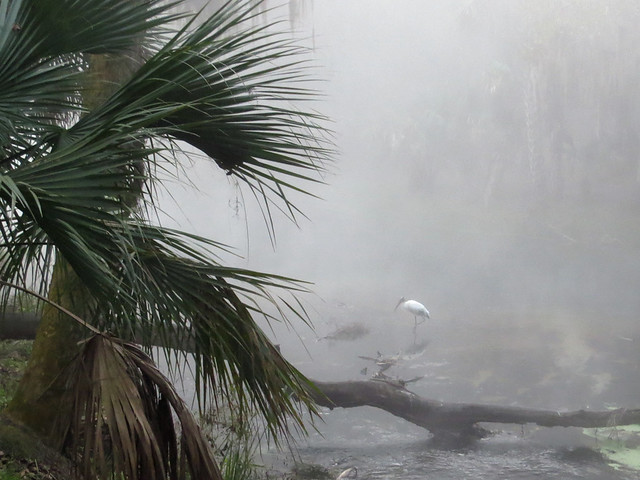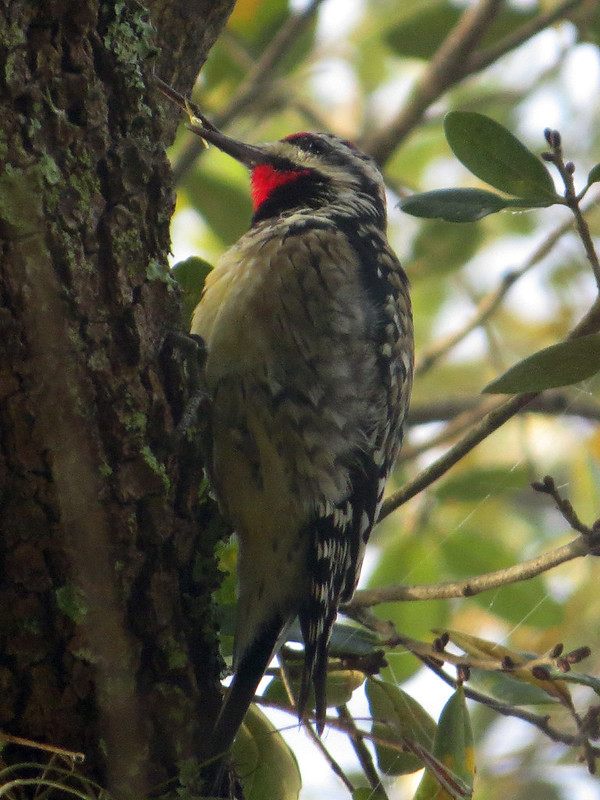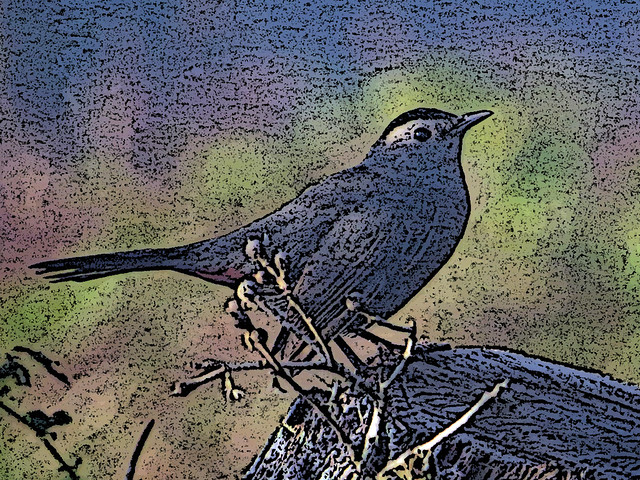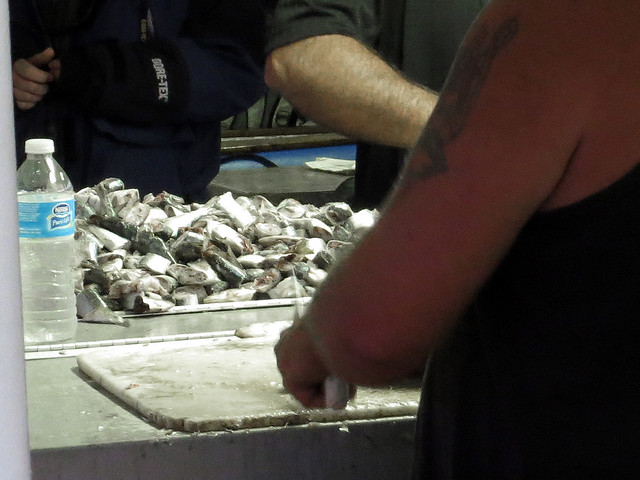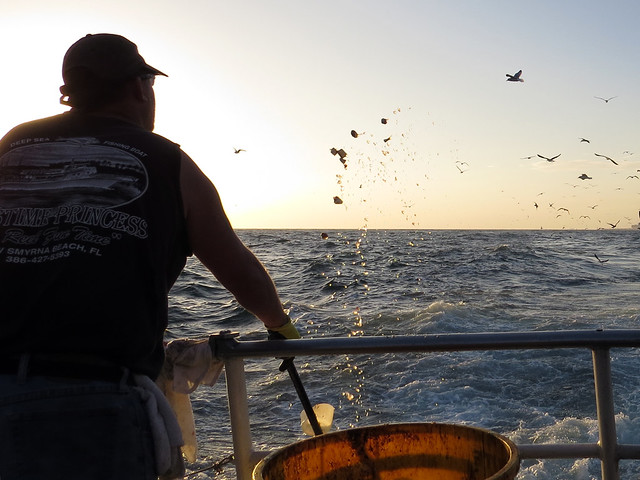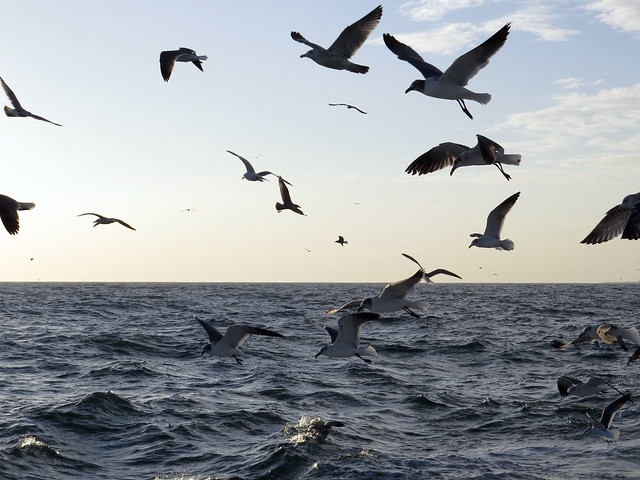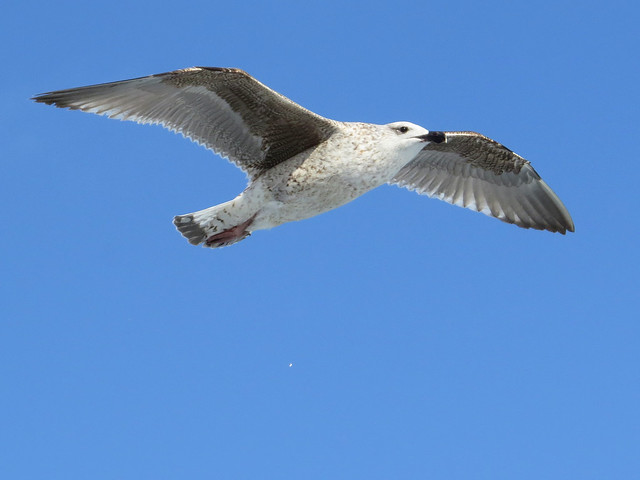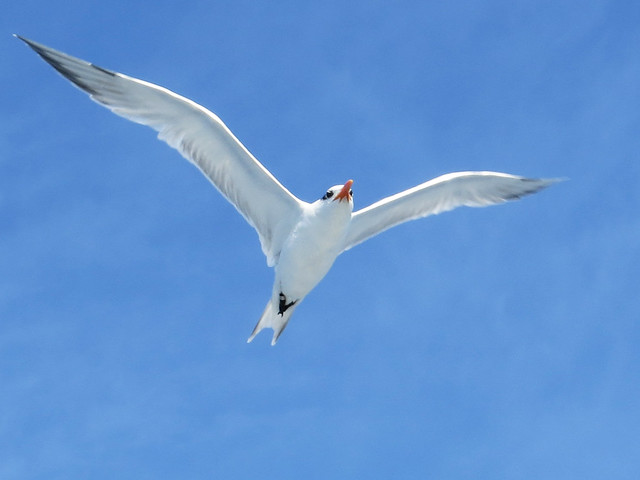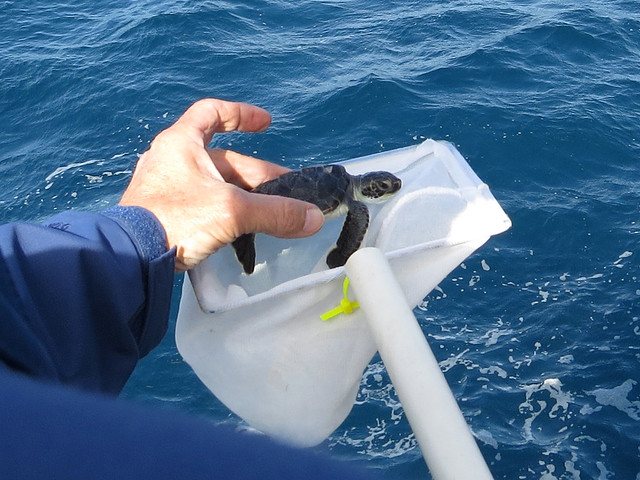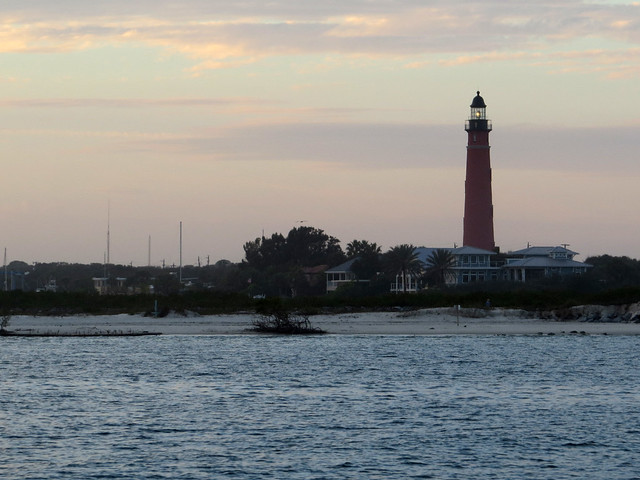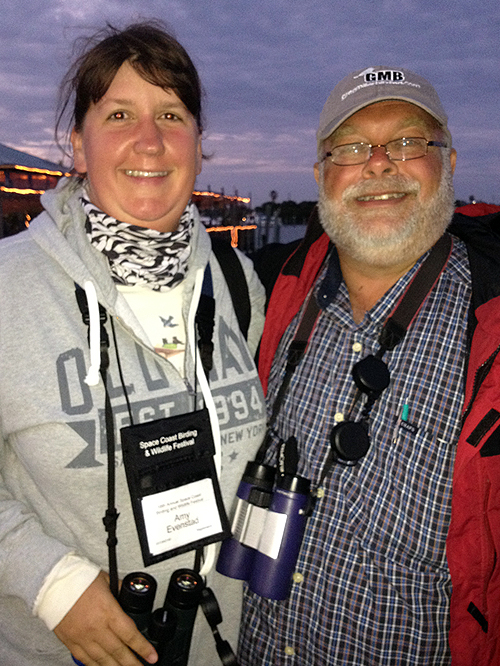FOXY
Yesterday I decided to sleep in and skip a morning bird walk. Of course this resulted in me feeling antsy by the afternoon, so after a surprise soaking afternoon rain I headed out the door and biked to Gemini Springs. It was just about half past three and the clouds persisted. It looked like it might rain again at any moment so in the dreary weather I took an accelerated hike through my usual haunts. It was a nice short walk and I picked up 35+ species, a good total considering the time of day.
I walked back to my bike, stowed my gear, and headed out of the park, intending to make one last quick stop at a stand of snags to see if an immature Red-headed Woodpecker was hanging out in its usual spot. It was. Target acquired, I straddled my bike and was just about to leave when a small flock of birds landed in the grass between the bike path and the snags. I scanned the flock, finding only Yellow-rumped Warblers. The last bird my binoculars landed on was partially obscured by grass, but I could see a stocky reddish figure scooting in the grass — just like a Fox Sparrow.
ZOINKS! A Fox Sparrow?!?!!!!!!!!!!11!!!
To give you an idea why I was so excited at the prospect of finding a Fox Sparrow at my local patch in central Florida, here is a USGS map of Christmas Bird Count sightings. This gives a good idea of the winter range for this species.
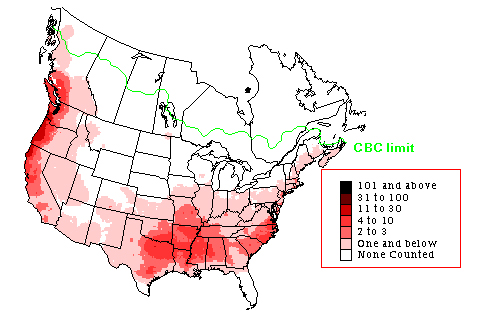
I watched the bird for just about a half minute before fumbling to leave my bike (which I was still straddling) and fumbling for my camera. In my clumsiness and excitement I lost sight of the bird. Oh noes!
So I waited. And waited. After about 15 minutes, the Yellow-rumped Warblers returned to forage in the grass. No Big Red. I waited a few more minutes before pulling up Fox Sparrow on the Sibley app on my iPhone. I played the bird’s song and to my amazement and utter delight, a foxy Fox Sparrow landed in a small tree just twenty yards from where I was standing. The light was POOR but I started snapping away. The resulting shots are fine for ID but not much more. The bird perched for a good three minutes so I was able to watch it for a while too. What a beauty! (Seriously, Fox Sparrows are gorgeous. Here’s a better Fox Sparrow photo.)

This morning, Arthur and I returned to Gemini Springs and Arthur spotted the sparrow in the same general area where I found it yesterday. I wonder how much longer the bird will linger here? Some migrants are already on the move. It probably won’t be too long for the Fox Sparrow, either.



